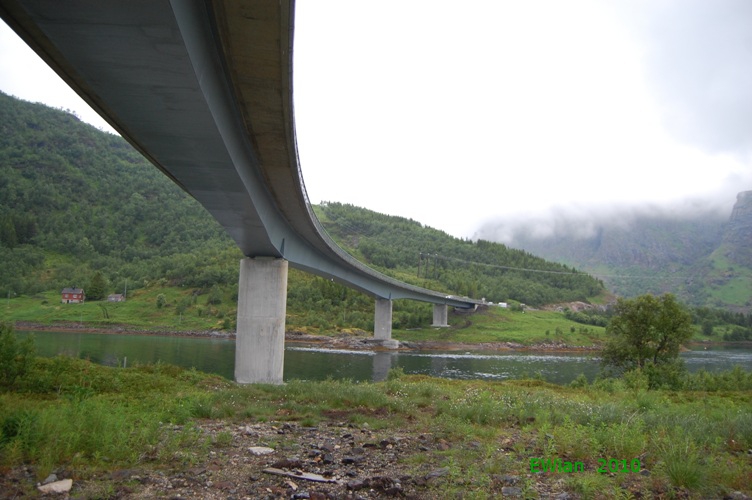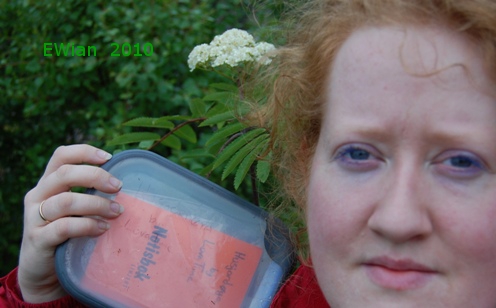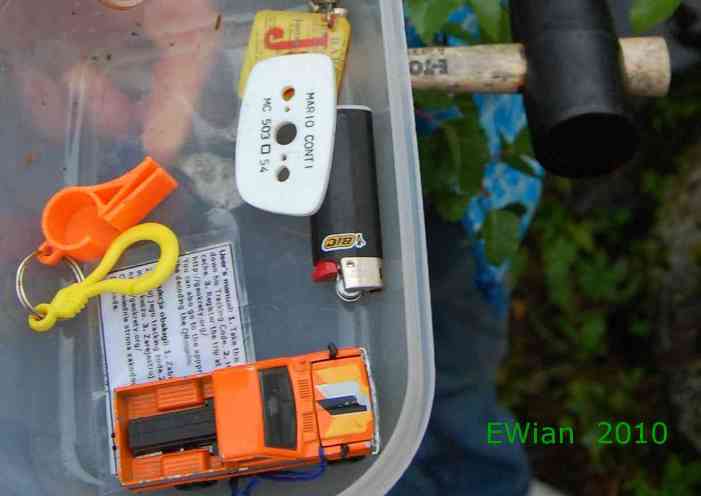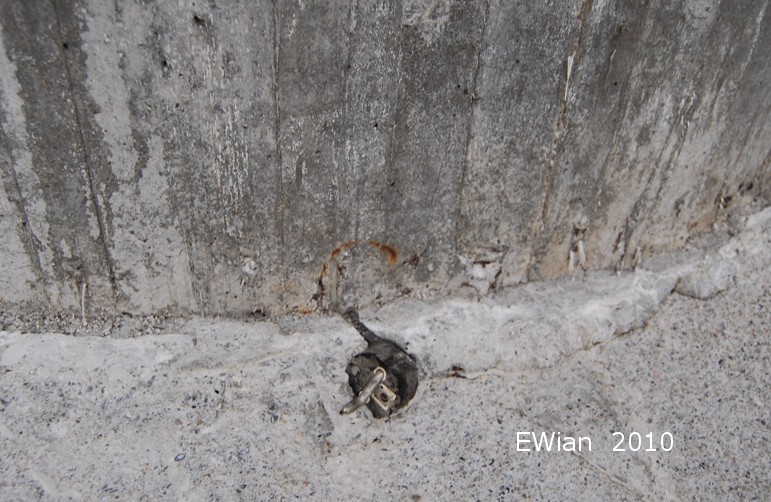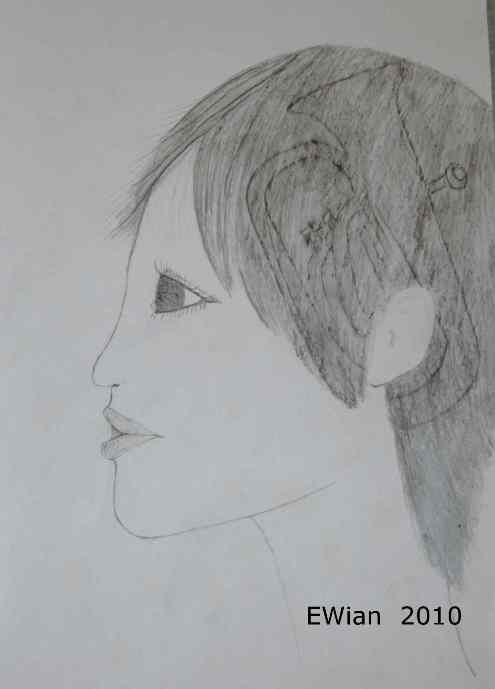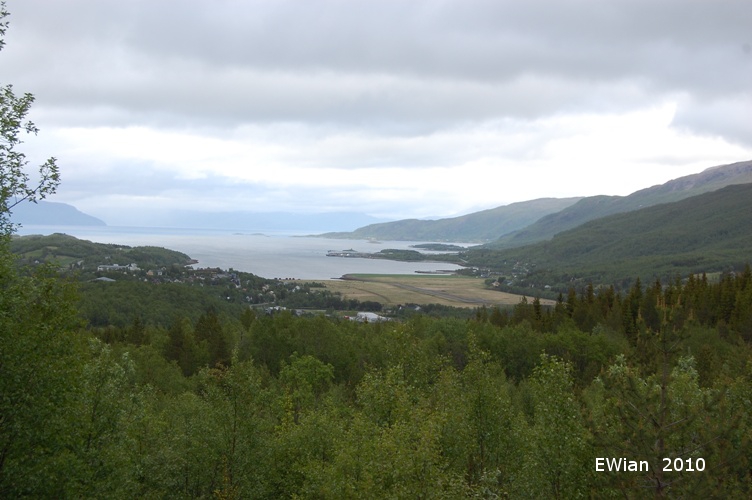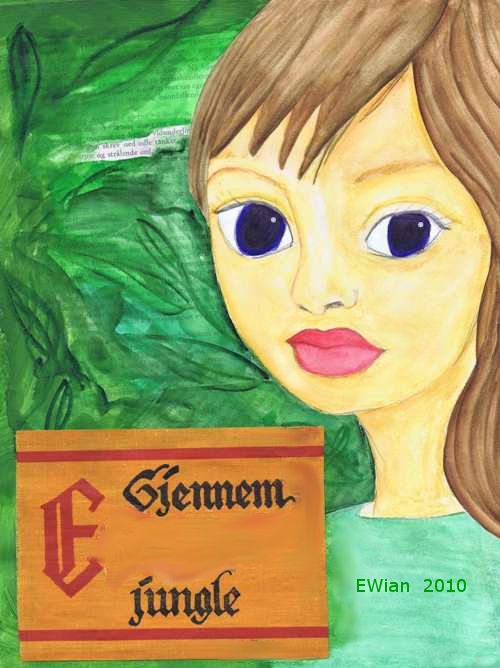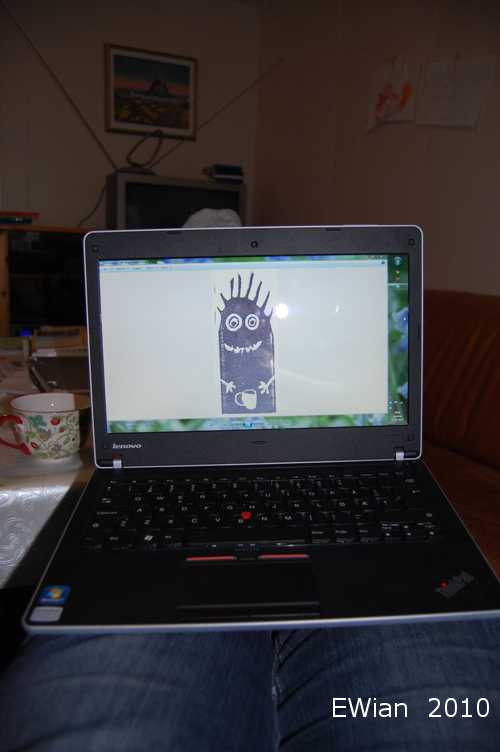Wednesday, 28 July 2010
Geocaching - Husjordøya
The new road to Lofoten opened December 1st 2007. A beautiful area is now made more accessible. The bridge is the first one connecting Lofoten with out taking a ferry. This cache(GC1C6PJ) is placed near one of the signature constructions along this route. Stop for lunch, take some pictures and enjoy the magnificent scenery.
We went there on a wet but beautiful day. The smell of pure air and blooming cloudberries and rowanberries was amazing.
In addition to the great trip we did find the cache and it was some small treasures in it. In some caches you can find small treasures, but if you take something out you must remember to leave something in the box that is equal or of more valour.
A bonus view is the plug moulded in the cement in one of the bridges foundation. If you want to join up and go treasure hunting go to this web page to find more info http://www.geocaching.com
Etiketter:
bridge,
Geo caching,
Geocach,
Lofoten,
me
Tuesday, 27 July 2010
EDM#17 - Draw a musical instrument
The EDM challenge#17 said: "Draw a musical instrument"
I made the instrument by drawing and cutting it out of paper. Then I laid it under another sheet of paper and rubbed the pencil over. I then did the drawing on top.
Etiketter:
EDM,
instrument,
pencil,
rubb
Monday, 26 July 2010
Movie Monday#18 way back into love
The illustration make it all thing come together, sweet story. The illustration work is done by Jimmy Liao.
Etiketter:
Jimmy Liao,
love,
Movie Monday
Movie Monda#17 Birds on the wires
Birds on the Wires from Jarbas Agnelli on Vimeo.
Love the capture of creativity in this little movie.
Etiketter:
birds,
Movie Monday
Thursday, 22 July 2010
Geocaching - Mineral # 2, Gruva, Ballangen
I have started Geocaching. My goal is to find at least one each month. Geocaching is like a treasure hunt mostly for grownups. There is everything from a difficult hike or an easy adventure. If you don't know what it is and want to know more you can go to http://www.geocaching.com or watch the little film.
My first find was the Geocache called Mineral#2, Gruva in Ballangen, Norway GC29DT4
The user that did hide this cache had made a wonderful description of the area online, and had found a historic place to hide it.
Ballangen is located on the south side of Ofotfjord in Nordland county, Norway. The village is 43 km south-west of Narvik. Ballangen as an independent municipality, is relatively young. In 1925, the northern part of urban Ballangen and Kjeldebotn a part of the Evenes municipality, while the southern part of Melkedalen and Efjord belonged Lødingen.
1. July 1925, the northern municipality became independent, with Ballangen as the municipal centre. It is belied that the establishment of Bjørkåsen Gruber (Birch-hill minding company) was the main reason why Ballangen was separated from Evenes. The southern section was added to Ballangen municipality in 1963.
The mountains in Ballangen particularly rich in various minerals. There have been many attempts at the operation of the deposits in the district. The first attempt at mining in Nordland County was a bronze work of the notorious Bal which started in 1636. Melting cabin was located at the end of Børsvannet.
It has been told many tales about Bal and his tyrannical exploitation of people, particularly the Sami population. The result was that he was eventually killed in a bestial way. The mines were closed up and no one knows where they where nor have anyone found the mines.
In 1670 the Swedes very interested in copper deposits in the Rånefjell. They even claimed that Rånefjell was Swedish! The mines here was operating with the second half of the 1600s, but the operation lasted only about ten years.
According to NGU, it registered 39 mines and the ore deposits of metallic minerals. In addition to other minerals such as dolomite at Hekkelstrand, mica at Blåfjell and quartz at Råndalen.
The dream of the great discovery is still living among many people in Ballangen municipality. There is still remains of test mining where people were looking for metals. At the beginning of the 1900s there had been muted more than 600 claims in the areas around Ballangen. Some still claimed that it was also found gold in the mountains, but it is well perhaps wishful thinking… who knows!
Mineral#2, Gruva (The Mine)
View from the Bjørkåsen(Birch-hill), where the cache is found.
One day in August 1876 there was found pyrite in Bjørkåsen(Birch-hill) it was discovered by Hans Martinussen Sjåfjell. At the end of 1880 Lars Olai Dypås intensified the test mining in the area, and he reported in his findings. Because of these findings, it was test mining was done several places in the area in the following years.
Lawyer Schjølberg from Bodø, takes an interest in these findings, and already in 1906 were established contact with the local landowners and Schjølberg for the acquisition of the necessary basis for building a plant with the port of shipment. In the 1907-1908 test mining was taken up again and got Schjølberg a muting letter.
Because Schjølberg did not have enough capital for further exploration operations, the rights granted to Otto Spinzig in 1909. Spinzig sent his engineer Curt Hunger to Ballangen on inspection to Ballangen, and 2.December 1910 was the sales contract regarding acquisition of land rights signed. The sale included 66 muting.
Spinzig initiated the investigation operate on sulfur and copper/pyrite deposits under the leadership of Curt Hunger. Mikal Mikalsen was employed as a supervisor and stiger(Mine Manager), while the miners were recruited from other plants nearby.
Exploration operations gave good results, and the labour force was increased, in the summer 1911 work the 70 men on the field.
Otto Spinzig contacted a company in which Baron van Fritz Friedländer was the main shareholder with the purpose of selling rights. This company sent in February 1912 Alfred Martin on inspection. It was initiated diamond drilling, and these were so positive that in August 1912, all rights granted to Friedländer Fulda. Alfred Martin was hired as director.
21. January 1913 the " Aktieselskapet Bjørkaasen Gruber” (Shares company Birch-hill mines) was founded, and 30 December 1913, the firm got a Royal Decree on concession for 55 years operation.
The operation was stopped under the World War I, but in the period 1916-1919 was carried out major construction works. In 1919 the work of the power station started, and at the most it worked 500 men at the facility. Beyond the 1920s, there was much activity with the development, and in 1921 the power station in Bjørkåsen (Birch-hill) put into operation.
In 1926, the Olavshaft was done, and at Haubakken, a lift tower was built. The Olavshaft was named after Olav the then Crown Prince of Norway.
At Martinstollen where all production was transported out, the mine gos 500 meter horizontally into the mountain to Olavshaft. It is partially open for guided tours during the summer. Under Martinstollen, there were six floors of the underlying mining publican. The distance between these was about 45 meters. All of these graduated from Olavshaft, where all production was hoisted up to Martinstollen.
These mine-arms, called Finnmark, Troms, Nordland, Helgeland, with further connections to the deeper level of Trøndelag, Møre and bottom lay the Sognefjord and Bergen, which was 420 meters below Martinstollen.
From Bjørkåsen(Birch- hill) there was a narrow gauge rail road, which brought all production down to Ballangen where there was silo construction and a dock with a single loading facilities.
At first it was steam locomotives, later they were replaced by a diesel locomotive.
It worked an average of approx 250 people at the plant at Bjørkåsen Gruber(Birch-hill mines) but in the end this number was reduced.
When the mine was operated, the working environment was not in focus. Personal protective equipment existed barely. Maybe someone used some cotton in his ears, and moist wipes the mouth to prevent dust getting dust into the lungs, but it was bad protection. How many who died too early because of silicosis… well nobody knows.
In February 1964 the mining operation ceased. The last miners leave the mine 29 February 1964, and an era in Ballangen's story was over.
Today there are not many traces of the large plant. The main crusher, the heater, flotation plant and the laundry are gone. The laboratory still stands, it has been used for storage. The elevator tower at Haubakken are removed, but the base of the tower is still there as well as remains of the wire.
Ballangen Mekaniske verksted (Ballangen Mechanical workshop) and Ballangen Energi(Ballangen Energy) is in the area today.
Ballangen Museum is located in the old main office and most of homes are still intact. They are own by private individuals. (I own one of the smaller one)
The information has partly been given by the Museum of Ballangen and partly by the user that has hidden the cache.
My first find was the Geocache called Mineral#2, Gruva in Ballangen, Norway GC29DT4
The user that did hide this cache had made a wonderful description of the area online, and had found a historic place to hide it.
Ballangen is located on the south side of Ofotfjord in Nordland county, Norway. The village is 43 km south-west of Narvik. Ballangen as an independent municipality, is relatively young. In 1925, the northern part of urban Ballangen and Kjeldebotn a part of the Evenes municipality, while the southern part of Melkedalen and Efjord belonged Lødingen.
1. July 1925, the northern municipality became independent, with Ballangen as the municipal centre. It is belied that the establishment of Bjørkåsen Gruber (Birch-hill minding company) was the main reason why Ballangen was separated from Evenes. The southern section was added to Ballangen municipality in 1963.
The mountains in Ballangen particularly rich in various minerals. There have been many attempts at the operation of the deposits in the district. The first attempt at mining in Nordland County was a bronze work of the notorious Bal which started in 1636. Melting cabin was located at the end of Børsvannet.
It has been told many tales about Bal and his tyrannical exploitation of people, particularly the Sami population. The result was that he was eventually killed in a bestial way. The mines were closed up and no one knows where they where nor have anyone found the mines.
In 1670 the Swedes very interested in copper deposits in the Rånefjell. They even claimed that Rånefjell was Swedish! The mines here was operating with the second half of the 1600s, but the operation lasted only about ten years.
According to NGU, it registered 39 mines and the ore deposits of metallic minerals. In addition to other minerals such as dolomite at Hekkelstrand, mica at Blåfjell and quartz at Råndalen.
The dream of the great discovery is still living among many people in Ballangen municipality. There is still remains of test mining where people were looking for metals. At the beginning of the 1900s there had been muted more than 600 claims in the areas around Ballangen. Some still claimed that it was also found gold in the mountains, but it is well perhaps wishful thinking… who knows!
Mineral#2, Gruva (The Mine)
View from the Bjørkåsen(Birch-hill), where the cache is found.
One day in August 1876 there was found pyrite in Bjørkåsen(Birch-hill) it was discovered by Hans Martinussen Sjåfjell. At the end of 1880 Lars Olai Dypås intensified the test mining in the area, and he reported in his findings. Because of these findings, it was test mining was done several places in the area in the following years.
Lawyer Schjølberg from Bodø, takes an interest in these findings, and already in 1906 were established contact with the local landowners and Schjølberg for the acquisition of the necessary basis for building a plant with the port of shipment. In the 1907-1908 test mining was taken up again and got Schjølberg a muting letter.
Because Schjølberg did not have enough capital for further exploration operations, the rights granted to Otto Spinzig in 1909. Spinzig sent his engineer Curt Hunger to Ballangen on inspection to Ballangen, and 2.December 1910 was the sales contract regarding acquisition of land rights signed. The sale included 66 muting.
Spinzig initiated the investigation operate on sulfur and copper/pyrite deposits under the leadership of Curt Hunger. Mikal Mikalsen was employed as a supervisor and stiger(Mine Manager), while the miners were recruited from other plants nearby.
Exploration operations gave good results, and the labour force was increased, in the summer 1911 work the 70 men on the field.
Otto Spinzig contacted a company in which Baron van Fritz Friedländer was the main shareholder with the purpose of selling rights. This company sent in February 1912 Alfred Martin on inspection. It was initiated diamond drilling, and these were so positive that in August 1912, all rights granted to Friedländer Fulda. Alfred Martin was hired as director.
21. January 1913 the " Aktieselskapet Bjørkaasen Gruber” (Shares company Birch-hill mines) was founded, and 30 December 1913, the firm got a Royal Decree on concession for 55 years operation.
The operation was stopped under the World War I, but in the period 1916-1919 was carried out major construction works. In 1919 the work of the power station started, and at the most it worked 500 men at the facility. Beyond the 1920s, there was much activity with the development, and in 1921 the power station in Bjørkåsen (Birch-hill) put into operation.
In 1926, the Olavshaft was done, and at Haubakken, a lift tower was built. The Olavshaft was named after Olav the then Crown Prince of Norway.
At Martinstollen where all production was transported out, the mine gos 500 meter horizontally into the mountain to Olavshaft. It is partially open for guided tours during the summer. Under Martinstollen, there were six floors of the underlying mining publican. The distance between these was about 45 meters. All of these graduated from Olavshaft, where all production was hoisted up to Martinstollen.
These mine-arms, called Finnmark, Troms, Nordland, Helgeland, with further connections to the deeper level of Trøndelag, Møre and bottom lay the Sognefjord and Bergen, which was 420 meters below Martinstollen.
From Bjørkåsen(Birch- hill) there was a narrow gauge rail road, which brought all production down to Ballangen where there was silo construction and a dock with a single loading facilities.
At first it was steam locomotives, later they were replaced by a diesel locomotive.
It worked an average of approx 250 people at the plant at Bjørkåsen Gruber(Birch-hill mines) but in the end this number was reduced.
When the mine was operated, the working environment was not in focus. Personal protective equipment existed barely. Maybe someone used some cotton in his ears, and moist wipes the mouth to prevent dust getting dust into the lungs, but it was bad protection. How many who died too early because of silicosis… well nobody knows.
In February 1964 the mining operation ceased. The last miners leave the mine 29 February 1964, and an era in Ballangen's story was over.
Today there are not many traces of the large plant. The main crusher, the heater, flotation plant and the laundry are gone. The laboratory still stands, it has been used for storage. The elevator tower at Haubakken are removed, but the base of the tower is still there as well as remains of the wire.
Ballangen Mekaniske verksted (Ballangen Mechanical workshop) and Ballangen Energi(Ballangen Energy) is in the area today.
Ballangen Museum is located in the old main office and most of homes are still intact. They are own by private individuals. (I own one of the smaller one)
The information has partly been given by the Museum of Ballangen and partly by the user that has hidden the cache.
Monday, 19 July 2010
Movie Monday#16 I'm Really, Really, Really Concentrating
I like the illustration style of this children's TV series, as well as the stories they tell.
Etiketter:
childrens TV,
Movie Monday
Saturday, 17 July 2010
Art journal - still in the jungle
After the last post I decide to make to give it another try. So this girl is still in the jungle. Not sure what she is doing there. Maybe she have meet someone interesting.
Medium used: pencil, watercolours and permanent marker.
Etiketter:
pencil,
permanent marker,
watercolours
Thursday, 15 July 2010
IF - diary
Well I started a diary/journal when I was 10. I still have those old ones and it is full of dear diary stuff, fun to read how I saw my life then. I stopped writing when my conscience turned heavy from not writing everyday like my friends. I picked it up again some years later realising I did the journalling for my own sake. I now know I do not have to write everything I have on my mind... Most days it is a drawing or a illustration.
Here is the rules I made for my self:
- make an entry to an "art journal" everyday
- for at least 15 minutes
- put at least one line on the paper
- not feel obligated to finish a drawing
- bring the "art journal" with me every time I go out side
You can read more about it here http://ewian.blogspot.com/2009/06/drawing-everyday.html
This illustration is for the Illustration Friday word "diary". So what do I capture in my diary/journal, well there is a bit of everything that touches my life. For somebody else to read my entry's, it would look chaotic or like a jungle. So that's what the name of this girls diary is "E through the jungle" (Norwegian text "E gjennom jungel"). The words highlighted are in Norwegian and would translate to: wonderful, wrote down the precious thoughts, warm and brilliant words.
Medium used: pencil, vintage paper, acrylic paint, watercolours.
Etiketter:
acrylic paint,
illustration friday,
pencil,
vintage paper,
watercolours
Monday, 12 July 2010
Sunday, 11 July 2010
New coputer
On screen is a scan of a stamp I carved, just playing around with it.
I got a new computer! Jippi! I am so happy. No more hiccups and programs that hang or virtual memory that wont allow me to run 2 programs at ones. I got the computer as a wedding anniversary gift from my dear. 10 years darling, what's something. The computer is red high gloss, fun with a little different than the usual black. For the tecnical stuff it's a Lenovo ThinkPad Edge 13" 0197 - Turion Neo X2 L625 1.6 GHz - 13.3" TFT, 32.2 cm x 22.8 cm x 2.5 cm only 1.7 kg.
Monday, 5 July 2010
Thursday, 1 July 2010
IF - satellite
High into the air, around and around, her daddy swings her.
Medium used: watercolour and permanent brush marker.
Etiketter:
father,
girl,
illustration friday,
permanent marker,
satellite,
swing,
watercolour
Subscribe to:
Comments (Atom)

